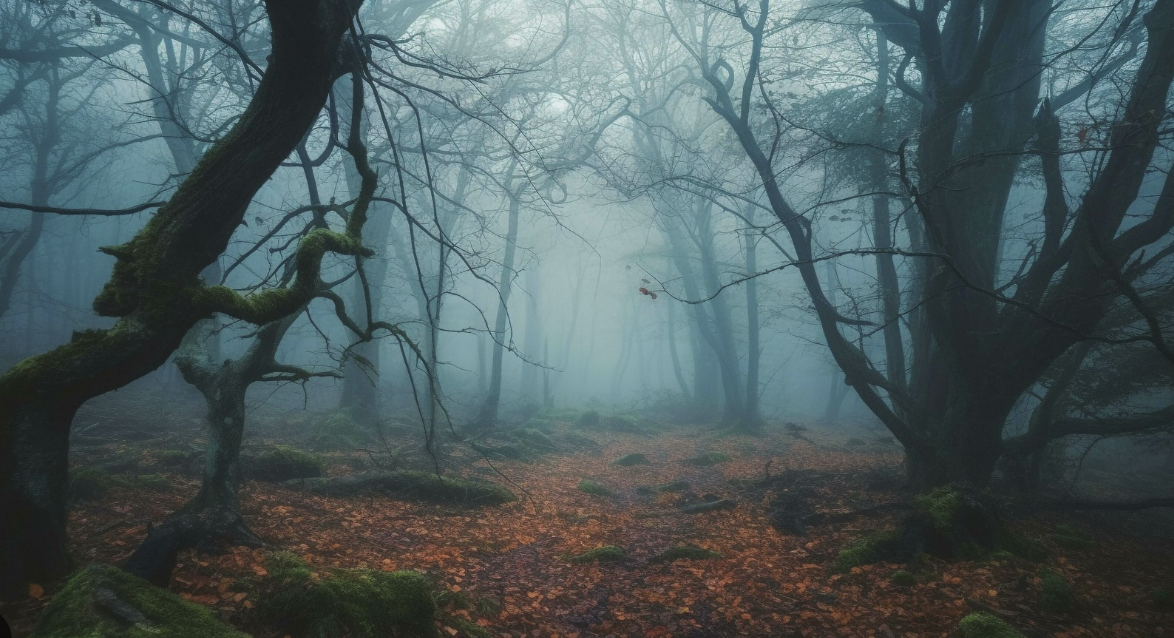
Mysterious Stories Blog
Strange, disturbing and mysterious stories from the outdoors
The Disturbing disappearance of Jessie Albertine Hoover from the Appalachian Trail

Jessie Albertine Hoover, Disappeared May 20, 1983, 100-Mile Wilderness, south of Baxter State Park, Appalachian Trail, Maine.
Revised July 2024
In May 1983, Jessie Albertine Hoover headed towards Maine, the northeasternmost U.S. state, to hike the Appalachian Trail (A.T.) and the 100-mile Wilderness to the south of Baxter State Park. This wilderness area is very remote.
Nearly two months later, in July 1983, Jessie was reported missing and was never found. She was reportedly ill-prepared for the journey on the trail from Mount Katahdin in Maine. Nearly four decades on, no clues have turned up.
Who was Jessie Hoover?
Jessie was 54 and lived in White Settlement, Texas. On November 5, 1982, Jessie Hoover's husband, Eugene, was killed when he was hit by a car. The loss of her husband after 35 years of marriage was tough for her, and soon after, she began to talk about hiking the Appalachian Trail from Maine to Georgia. Years before, she had seen an article in the National Geographic Magazine about the famous trek.
Although her family was worried about her plans, she was adamant that the Trail was fine for a woman her age. She created a detailed itinerary of when she would arrive at major stops along the trail to pick up supplies and wire for money. She even made plans with her doctor to get refills of her epilepsy medication.
Information on the Appalachian Trail
The 2200-mile Appalachian National Scenic Trail, generally known as the Appalachian Trail or the A.T., is a marked hiking trail in the Eastern United States extending between Springer Mountain in Georgia and Mount Katahdin in Maine. Between 2 million and 3 million people hike the Appalachian Trail yearly, with around 10 percent of thru-hikers starting in Maine, usually in June when the weather has improved. Only a quarter ever finish the entire route.
Jessie Hoover’s hike near the 100-Mile Wilderness

On May 16, 1983, Jessie headed south toward Maine and the 100-Mile Wilderness, to the south of Baxter State Park. This wilderness area is so remote that hikers are warned to carry at least eight to ten days’ worth of food on this part of the journey.
After Jessie failed to call the family to advise her progress on the Trail, her sister reported her missing to the warden service on July 11, almost two months after she was last seen. At this point, they started a formal search. However, the investigation report says Jessie was woefully unprepared, with light clothing and only beef jerky for sustenance.
Unlike Geraldine Largay, who also went missing in the same area in 2013 and whose body was found in her tent two years later, Jessie Hoover's case got little or no media attention at the time.
Searchers found that she had tried to climb Mount Katahdin in Baxter State Park on May 20, 1983, but rangers had warned her that the hike was not advisable given her lack of supplies or equipment. Mount Katahdin (pronounced "kə-TAH-dən") is the highest mountain in Maine at 5,267 feet (1,605 m). The Penobscot Indians named it and means "The Greatest Mountain".

At the time of Jessie's disappearance, hikers entering and leaving the 100-Mile Wilderness had to pass through the old Abol gatehouse on the Golden Road, a private road built by Great Northern Paper Company in the early 1970s to carry logs to local mills. An attendant there remembered Jessie in late May 1983 and that she had gone toward the trailhead of the 100-mile Wilderness on the other side of Abol Bridge. That was the first and last time the attendant saw her.

The search for Jessie Hoover
The potential search area was around 15 million acres, and within it, there were hundreds of miles of trail on which Jessie could have become lost. Because of the density of the trees, the amount of vegetation, and the fact that some areas of the main trail are not that well marked, it can be easy to lose your bearings and to become lost for days.
Northbound Appalachian Trail hikers were questioned all that summer whether they'd seen Jessie, but none said they had.
May temperatures regularly hit lows in the 40s and 30s, causing potential hypothermia, and when Jessie disappeared, there was light rain at times.
Park rangers never found a body, clothes, or her blue pack despite having a large-scale search operation in place for another hiker in the same area at the same time. Rangers said, “We went over [the woods] with a fine-tooth comb. If she was there, we would have found her. We don’t ignore people in the woods.”
It was strange to rangers as there was not one clue, she vanished from the area.
What happened to Jessie Hoover?
Nearly 40 years since she disappeared, no trace of Jessie has ever been found. Jessie was ill-prepared to tackle the 100-mile wilderness in Maine, especially on a solo hike. Lots could have gone wrong - hypothermia, disorientation, running out of food, accident, seizure caused by epilepsy, and maybe even foul play. It’s a wild, rugged, and remote place, and the best advice would not be to tackle the Appalachian Trail as a solo hiker.
Exclusive articles for members of StrangeOutdoors that are not available elsewhere on the site.
See the latest Exclusive members-only articles on StrangeOutdoors.com
Other stories from the Appalachian trail
Murder on the Appalachian Trail
Other strange stories from Maine
The disturbing disappearance and death of Geraldine Largay on the Appalachian Trail
Sources
http://charleyproject.org/case/jesse-albertine-hoover
http://bangordailynews.com/2016/05/10/outdoors/how-a-reporter-unraveled-the-untold-tale-of-missing-at-hiker-jessie-hoover/
RECENT BLOG POSTS
